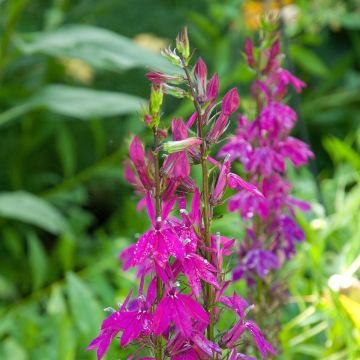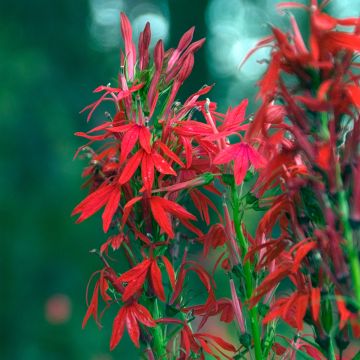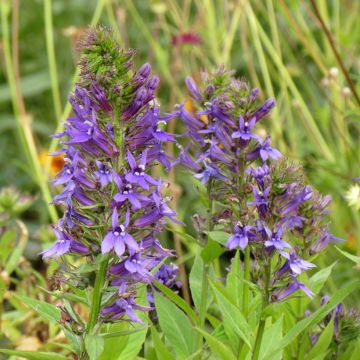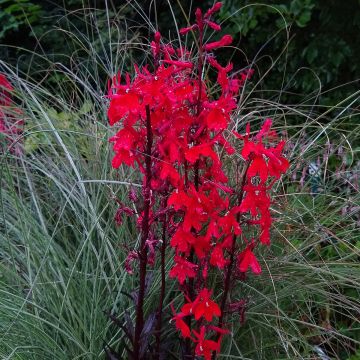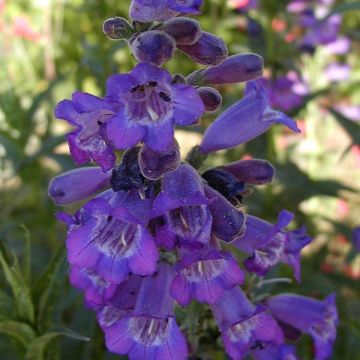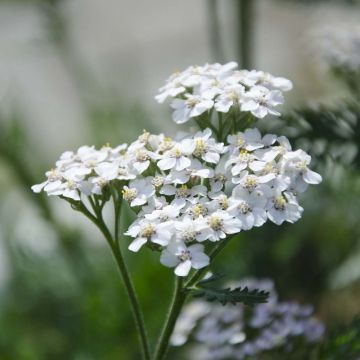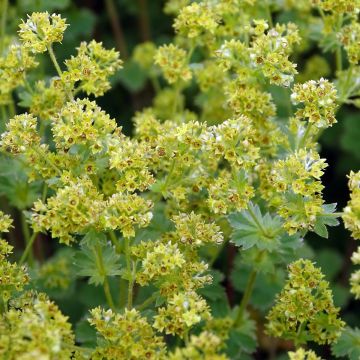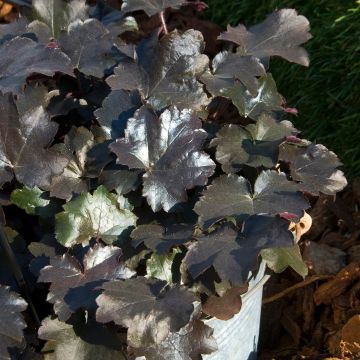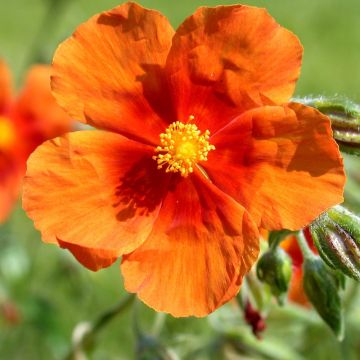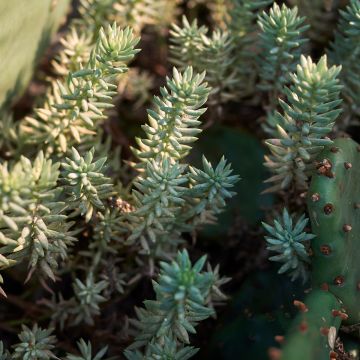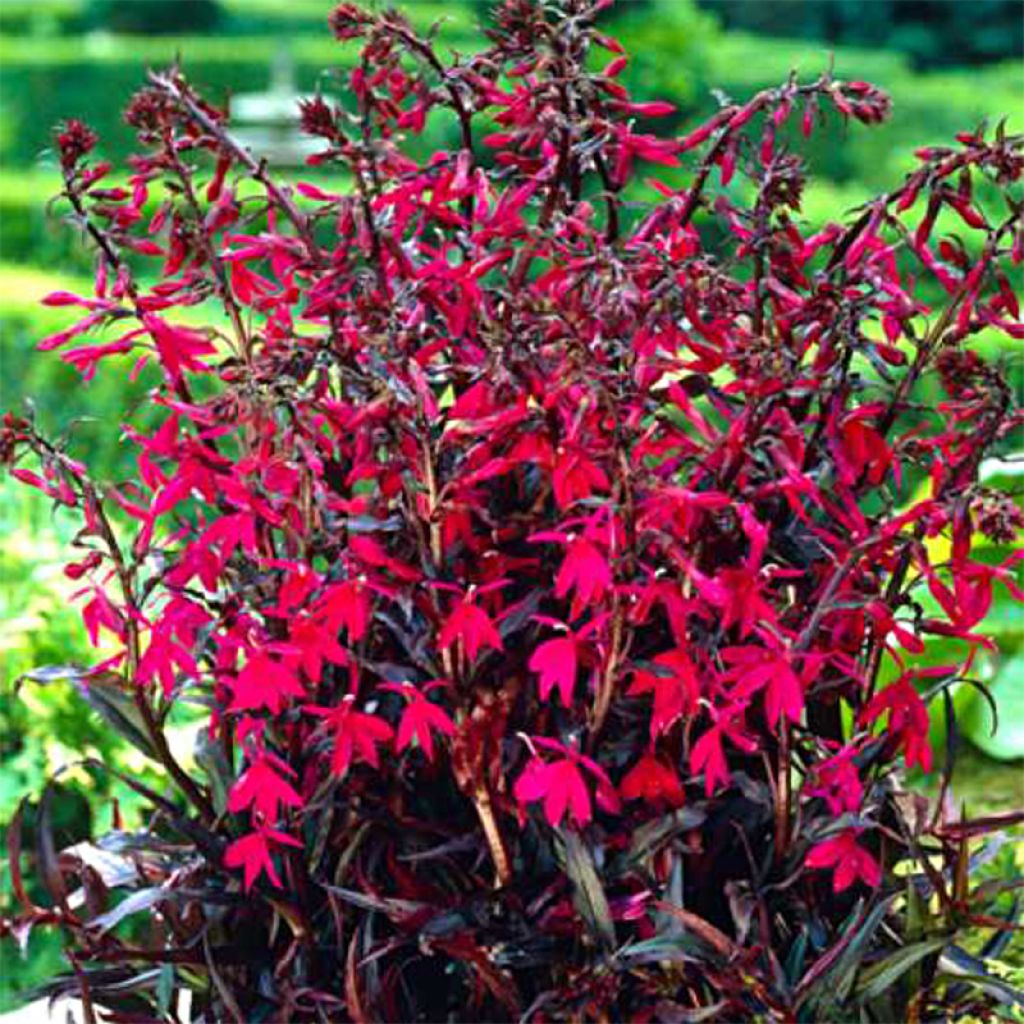

Lobelia speciosa Russian Princess
Lobelia speciosa Russian Princess
Lobelia x speciosa Russian Princess
Garden Lobelia, Cardinal Flower
This item cannot be shipped to the selected country
Delivery charge from €5.90
More information
Schedule delivery date,
and select date in basket
This plant carries a 12 months recovery warranty
More information
We guarantee the quality of our plants for a full growing cycle, and will replace at our expense any plant that fails to recover under normal climatic and planting conditions.
From €5.90 for pickup delivery and €6.90 for home delivery
Express home delivery from €8.90.
Does this plant fit my garden?
Set up your Plantfit profile →
Description
The Lobelia x speciosa Russian Princess is a high-colored variety of hybrid lobelia that deserves to be used more in damp gardens or at the edge of water features. This endearing plant overflows with life, forming a bunch of purple-chocolate leafy stems that end in extremely bright purple-violet tubular and bilabiate flowers. Generous and hardy, this short-lived perennial is also demanding, requiring a fresh to moist and fertile soil, and a rather sunny exposure.
The Lobelia x speciosa is a plant from the campanulaceae family of horticultural origin. Derived from the American species Lobelia cardinalis, Lobelia splendens, and Lobelia siphilitica, this herbaceous perennial with a short lifespan easily perpetuates by dividing the stumps every two years. The 'Russian Princess' variety forms a bushy and upright clump, 80 cm (32in) to 1 m (3ft) tall and 50 to 60 cm (20 to 24in) wide. It stands out with its beautiful oblong foliage, with dentate margins, of a purple colour with chocolate and shiny reflections, carried by solid stems of the same hue. Each stem branches out and bears from August to October long erect spikes adorned with very peculiar tubular corolla flowers, somewhat reminiscent of soft-winged butterflies: each 5 cm (2in) long flower consists of 2 lips, the upper lip being itself bilabiate, and the lower lip trilobed.
The Lobelia speciosa Russian Princess is a plant for moist to fresh soil, ideal for ornamental use on the banks of water points, but also very beautiful in a bed where the soil remains fresh in summer. In this usage, it can be associated with vernonias, Caffre lilies, white or pink hastate verbenas, or Physostegia virginiana. This variety will also be very beautiful accompanied by gray foliage in a tall bed. Plants like Artemisia lactiflora, Crex granularis, or Hosta 'Lacy Belle' will bring the silvery or bluish touch that forms a magnificent setting for its sparkling colors.
Report an error about the product description
Lobelia speciosa Russian Princess in pictures




Flowering
Foliage
Plant habit
Botanical data
Lobelia
x speciosa
Russian Princess
Campanulaceae
Garden Lobelia, Cardinal Flower
Cultivar or hybrid
Other Lobelia
Planting and care
Plant the Lobelia x speciosa in a rather sunny location, in moist to wet and not too chalky soil. It is somewhat sensitive to cold, but it actually fears winter humidity more. However, since it requires moist soil in summer, it is preferable to winter it in regions with heavy frost. Some varieties have their stumps hollow out and rot in winter. To keep them and perpetuate them for many years, it is necessary to divide the stumps every 2 to 3 years, preferably in spring. Thus rejuvenated, they will be your companions for life. All hybrid lobelias are deciduous and their foliage disappears completely in winter.
Planting period
Intended location
Care
-
, onOrder confirmed
Reply from on Promesse de fleurs
Summer flowering perennials
Haven't found what you were looking for?
Hardiness is the lowest winter temperature a plant can endure without suffering serious damage or even dying. However, hardiness is affected by location (a sheltered area, such as a patio), protection (winter cover) and soil type (hardiness is improved by well-drained soil).

Photo Sharing Terms & Conditions
In order to encourage gardeners to interact and share their experiences, Promesse de fleurs offers various media enabling content to be uploaded onto its Site - in particular via the ‘Photo sharing’ module.
The User agrees to refrain from:
- Posting any content that is illegal, prejudicial, insulting, racist, inciteful to hatred, revisionist, contrary to public decency, that infringes on privacy or on the privacy rights of third parties, in particular the publicity rights of persons and goods, intellectual property rights, or the right to privacy.
- Submitting content on behalf of a third party;
- Impersonate the identity of a third party and/or publish any personal information about a third party;
In general, the User undertakes to refrain from any unethical behaviour.
All Content (in particular text, comments, files, images, photos, videos, creative works, etc.), which may be subject to property or intellectual property rights, image or other private rights, shall remain the property of the User, subject to the limited rights granted by the terms of the licence granted by Promesse de fleurs as stated below. Users are at liberty to publish or not to publish such Content on the Site, notably via the ‘Photo Sharing’ facility, and accept that this Content shall be made public and freely accessible, notably on the Internet.
Users further acknowledge, undertake to have ,and guarantee that they hold all necessary rights and permissions to publish such material on the Site, in particular with regard to the legislation in force pertaining to any privacy, property, intellectual property, image, or contractual rights, or rights of any other nature. By publishing such Content on the Site, Users acknowledge accepting full liability as publishers of the Content within the meaning of the law, and grant Promesse de fleurs, free of charge, an inclusive, worldwide licence for the said Content for the entire duration of its publication, including all reproduction, representation, up/downloading, displaying, performing, transmission, and storage rights.
Users also grant permission for their name to be linked to the Content and accept that this link may not always be made available.
By engaging in posting material, Users consent to their Content becoming automatically accessible on the Internet, in particular on other sites and/or blogs and/or web pages of the Promesse de fleurs site, including in particular social pages and the Promesse de fleurs catalogue.
Users may secure the removal of entrusted content free of charge by issuing a simple request via our contact form.
The flowering period indicated on our website applies to countries and regions located in USDA zone 8 (France, the United Kingdom, Ireland, the Netherlands, etc.)
It will vary according to where you live:
- In zones 9 to 10 (Italy, Spain, Greece, etc.), flowering will occur about 2 to 4 weeks earlier.
- In zones 6 to 7 (Germany, Poland, Slovenia, and lower mountainous regions), flowering will be delayed by 2 to 3 weeks.
- In zone 5 (Central Europe, Scandinavia), blooming will be delayed by 3 to 5 weeks.
In temperate climates, pruning of spring-flowering shrubs (forsythia, spireas, etc.) should be done just after flowering.
Pruning of summer-flowering shrubs (Indian Lilac, Perovskia, etc.) can be done in winter or spring.
In cold regions as well as with frost-sensitive plants, avoid pruning too early when severe frosts may still occur.
The planting period indicated on our website applies to countries and regions located in USDA zone 8 (France, United Kingdom, Ireland, Netherlands).
It will vary according to where you live:
- In Mediterranean zones (Marseille, Madrid, Milan, etc.), autumn and winter are the best planting periods.
- In continental zones (Strasbourg, Munich, Vienna, etc.), delay planting by 2 to 3 weeks in spring and bring it forward by 2 to 4 weeks in autumn.
- In mountainous regions (the Alps, Pyrenees, Carpathians, etc.), it is best to plant in late spring (May-June) or late summer (August-September).
The harvesting period indicated on our website applies to countries and regions in USDA zone 8 (France, England, Ireland, the Netherlands).
In colder areas (Scandinavia, Poland, Austria...) fruit and vegetable harvests are likely to be delayed by 3-4 weeks.
In warmer areas (Italy, Spain, Greece, etc.), harvesting will probably take place earlier, depending on weather conditions.
The sowing periods indicated on our website apply to countries and regions within USDA Zone 8 (France, UK, Ireland, Netherlands).
In colder areas (Scandinavia, Poland, Austria...), delay any outdoor sowing by 3-4 weeks, or sow under glass.
In warmer climes (Italy, Spain, Greece, etc.), bring outdoor sowing forward by a few weeks.

































